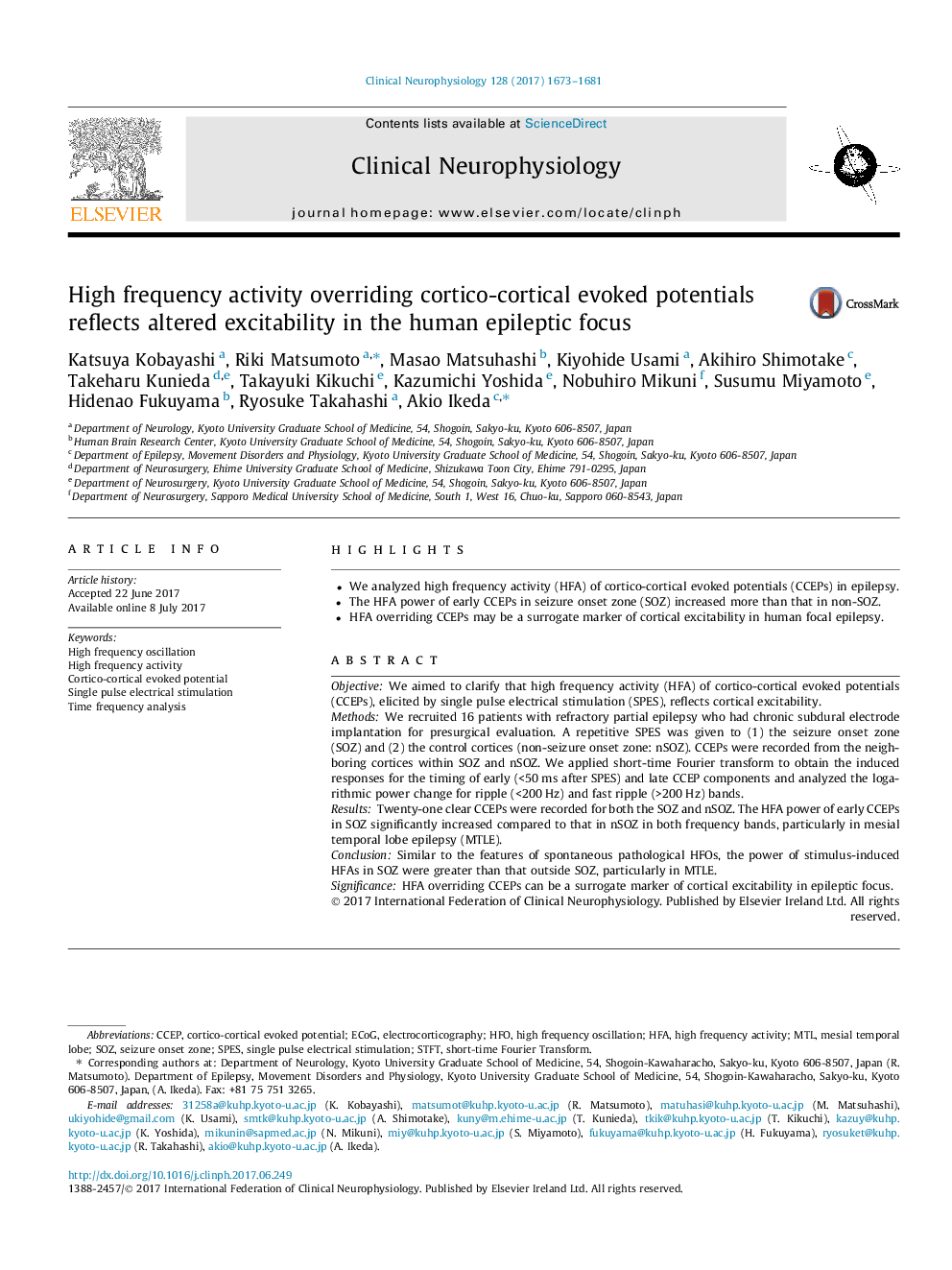| Article ID | Journal | Published Year | Pages | File Type |
|---|---|---|---|---|
| 5627233 | Clinical Neurophysiology | 2017 | 9 Pages |
â¢We analyzed high frequency activity (HFA) of cortico-cortical evoked potentials (CCEPs) in epilepsy.â¢The HFA power of early CCEPs in seizure onset zone (SOZ) increased more than that in non-SOZ.â¢HFA overriding CCEPs may be a surrogate marker of cortical excitability in human focal epilepsy.
ObjectiveWe aimed to clarify that high frequency activity (HFA) of cortico-cortical evoked potentials (CCEPs), elicited by single pulse electrical stimulation (SPES), reflects cortical excitability.MethodsWe recruited 16 patients with refractory partial epilepsy who had chronic subdural electrode implantation for presurgical evaluation. A repetitive SPES was given to (1) the seizure onset zone (SOZ) and (2) the control cortices (non-seizure onset zone: nSOZ). CCEPs were recorded from the neighboring cortices within SOZ and nSOZ. We applied short-time Fourier transform to obtain the induced responses for the timing of early (<50Â ms after SPES) and late CCEP components and analyzed the logarithmic power change for ripple (<200Â Hz) and fast ripple (>200Â Hz) bands.ResultsTwenty-one clear CCEPs were recorded for both the SOZ and nSOZ. The HFA power of early CCEPs in SOZ significantly increased compared to that in nSOZ in both frequency bands, particularly in mesial temporal lobe epilepsy (MTLE).ConclusionSimilar to the features of spontaneous pathological HFOs, the power of stimulus-induced HFAs in SOZ were greater than that outside SOZ, particularly in MTLE.SignificanceHFA overriding CCEPs can be a surrogate marker of cortical excitability in epileptic focus.
